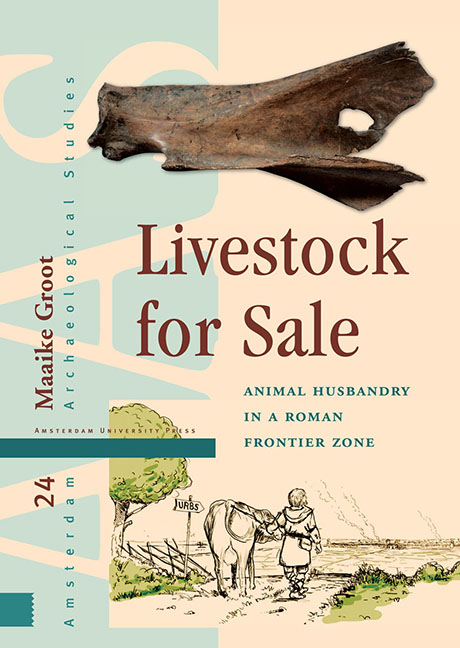Book contents
Summary
FRAMEWORK, SCOPE AND RESEARCH QUESTIONS
INTRODUCTION
Little is known about the way in which previously self-sufficient rural communities responded to market demand for agrarian products in the past, or about the resulting changes in agrarian strategies.
This topic will be studied through a case study of animal husbandry in the Lower Rhine area in the Roman period. With the arrival of the Romans to the southern and central part of what is now the Netherlands, a substantial group of consumers was introduced into what was basically a subsistent agrarian society. In earlier periods, with the exception of perhaps a small minority of religious or craft specialists, everyone was involved in agrarian production. The arrival of the Roman army constituted a large group of people that depended on others for their food. Moreover, in the town of Nijmegen, we find administrators, traders and craftsmen, most of whom did not or only to a limited extent produce their own food. The Roman occupation thus introduced a separation between producers and consumers.
The Roman army and administrators, as well as an inf lux of traders, stayed in the southern half of the Netherlands for nearly four centuries. While some products were imported, other foodstuffs were of local origin. The presence of imported material culture in rural sites is an indication that local people participated in trade. With farming as their economic basis, an agrarian surplus is the most likely form of goods that could be traded for imported products such as pottery. This means that the local farmers managed to produce more food than they needed for themselves. How they managed this is the main question of this study. The aim is to trace developments in animal husbandry from the Late Iron Age to the Late Roman period, investigate whether these developments can be related to market demands, and gain an understanding of the impact of the Roman occupation on the agrarian economy.
Although this is a case study, it is expected that the results will be of wider relevance to other researchers with an interest in agrarian societies faced with major economic changes or in the organisation of food supply to towns and army.
- Type
- Chapter
- Information
- Livestock for SaleAnimal Husbandry in a Roman Frontier Zone, pp. 1 - 20Publisher: Amsterdam University PressPrint publication year: 2016



